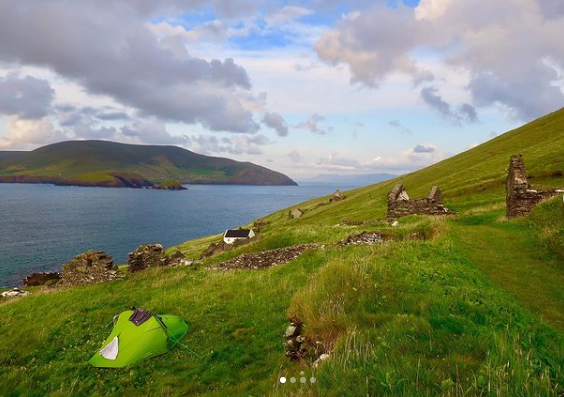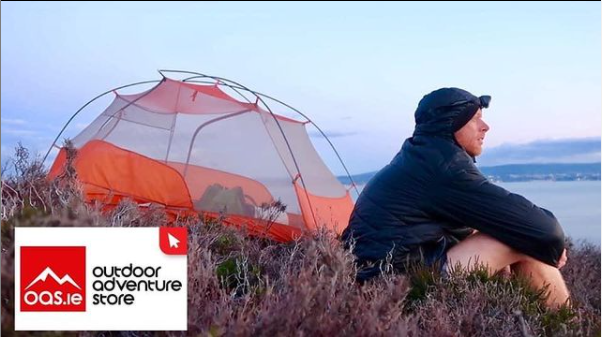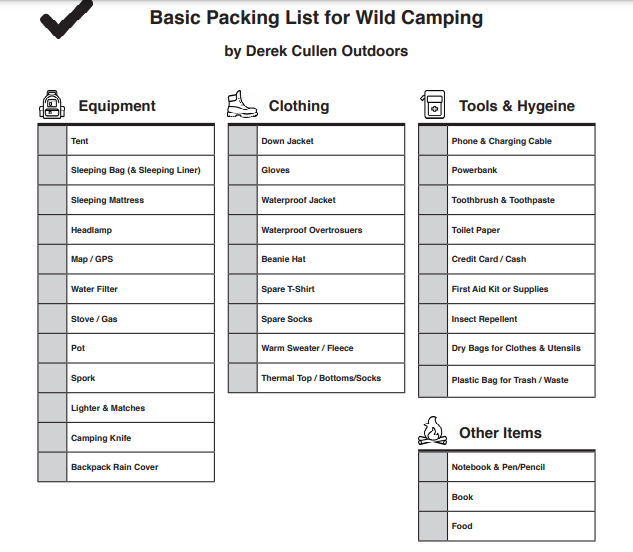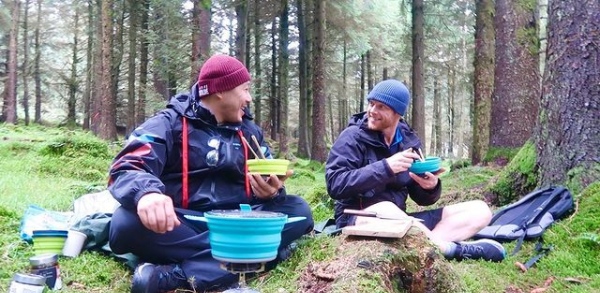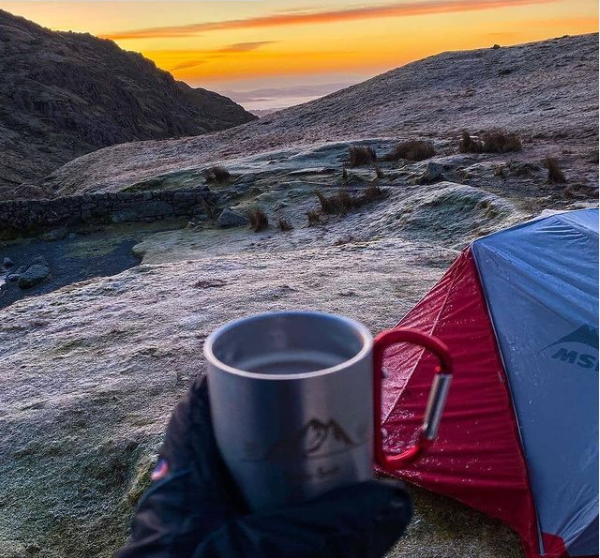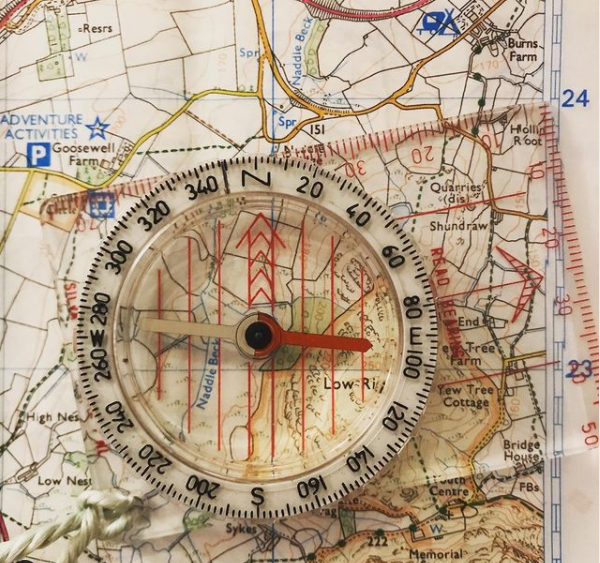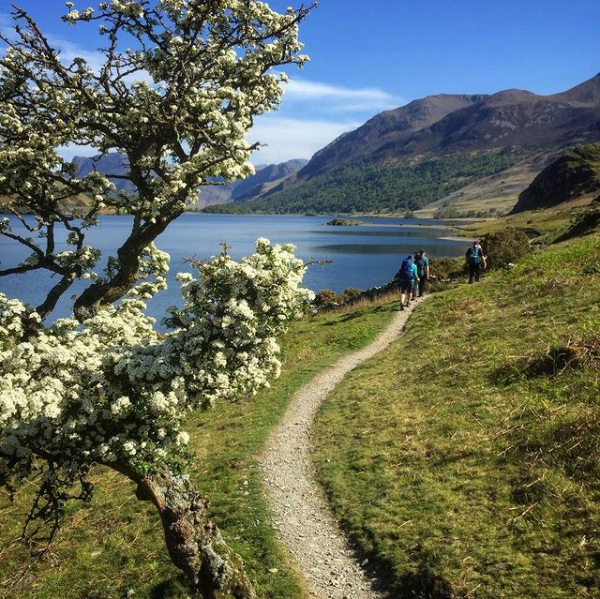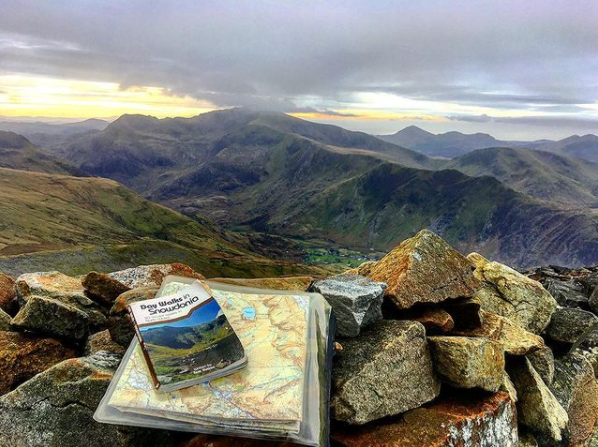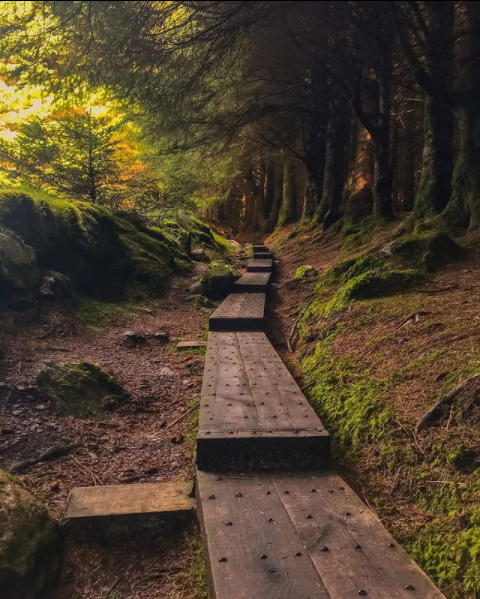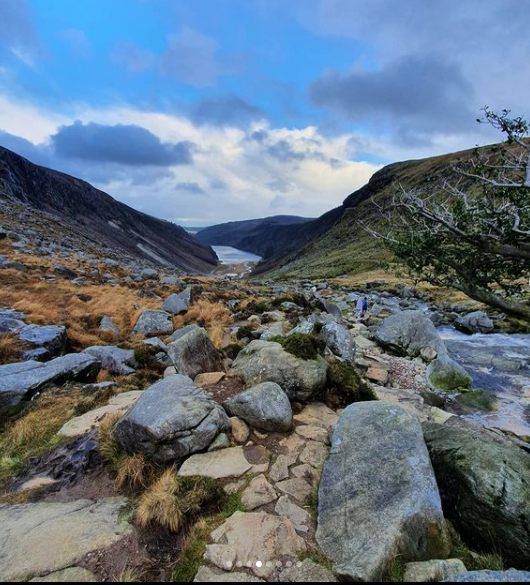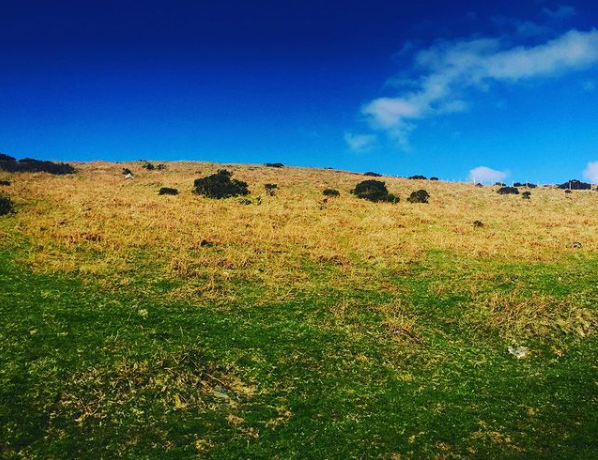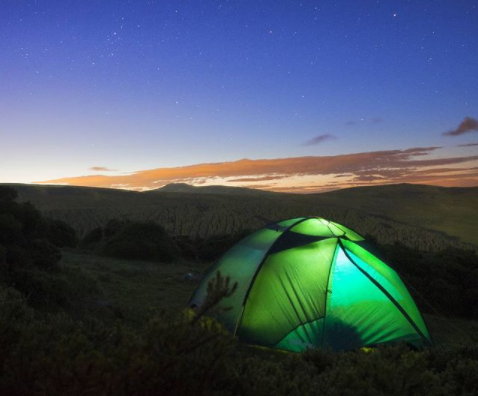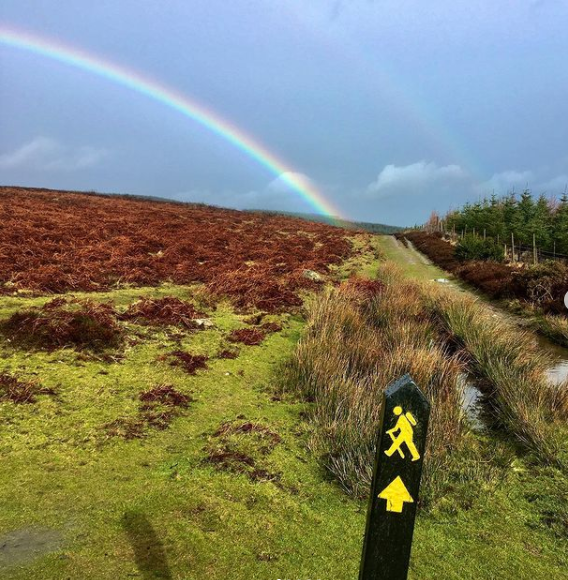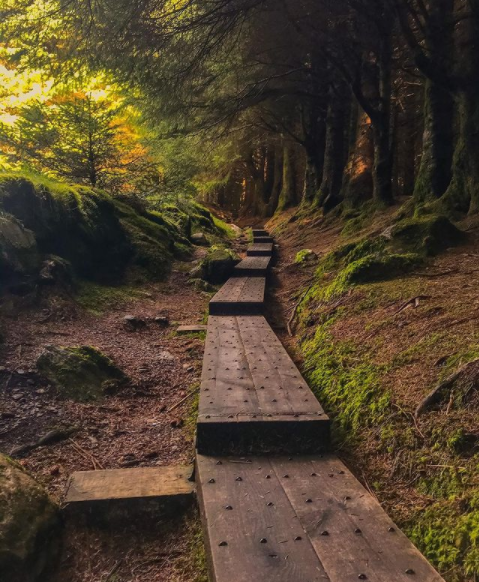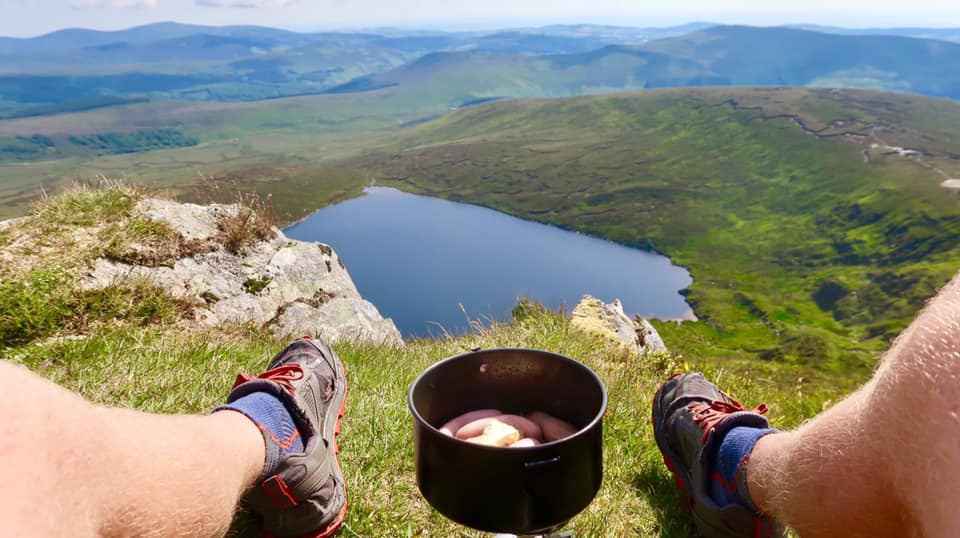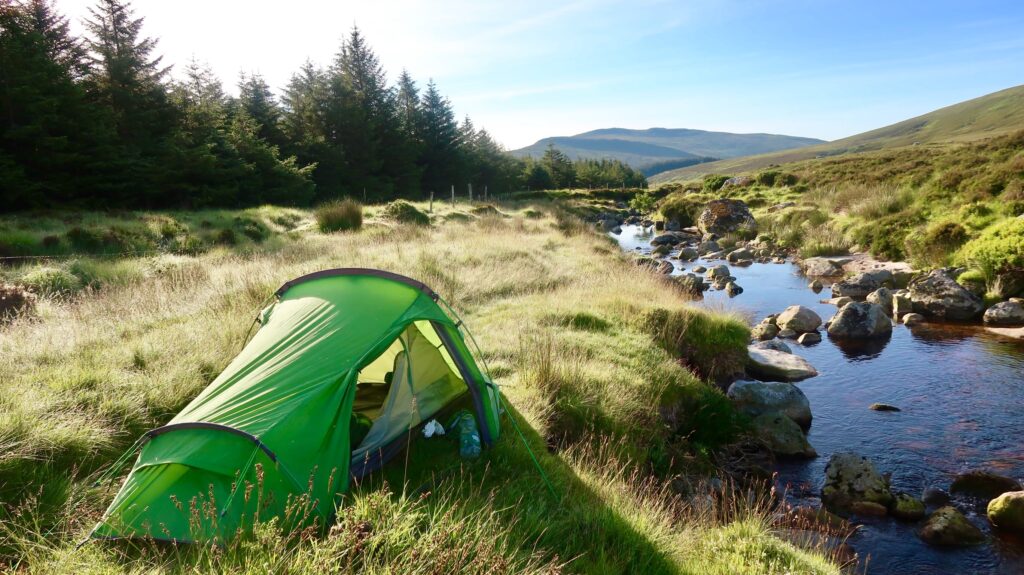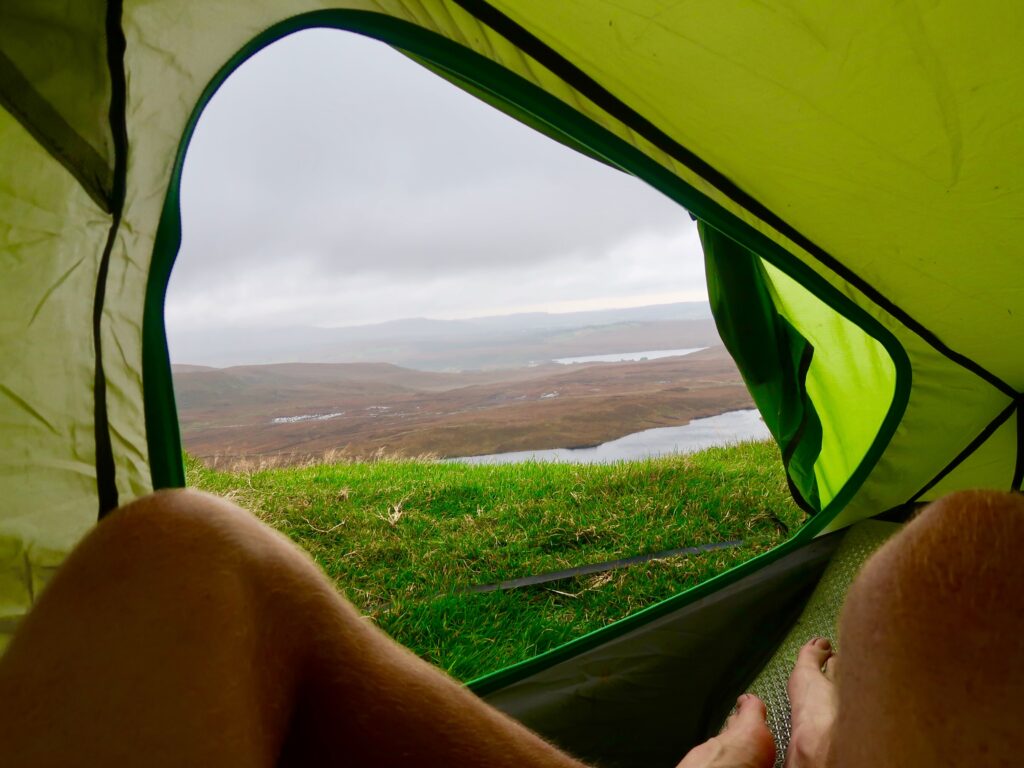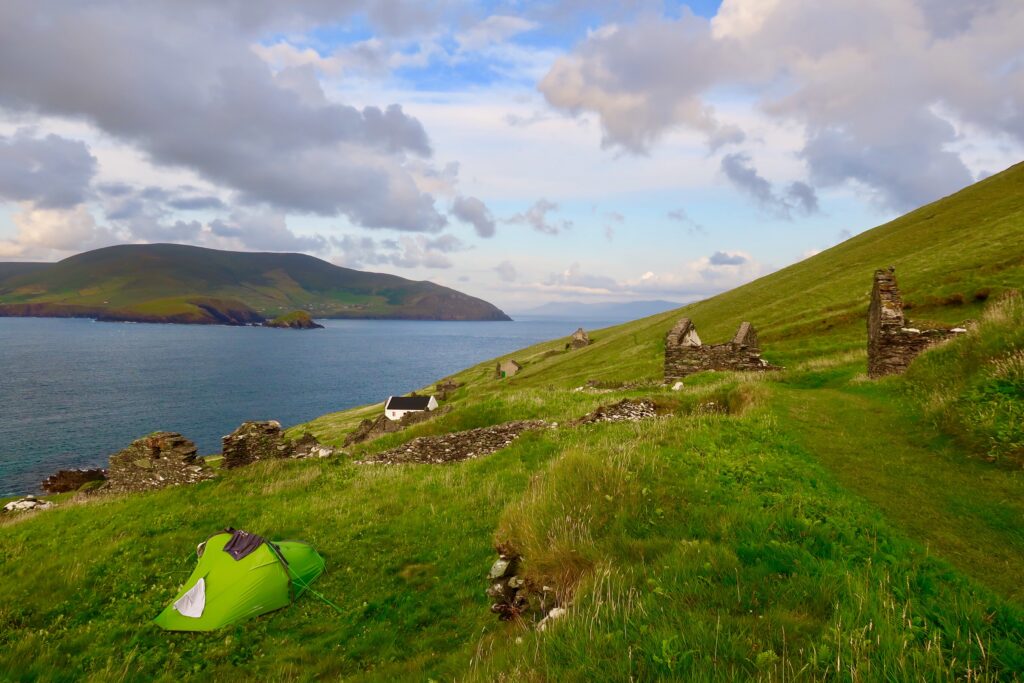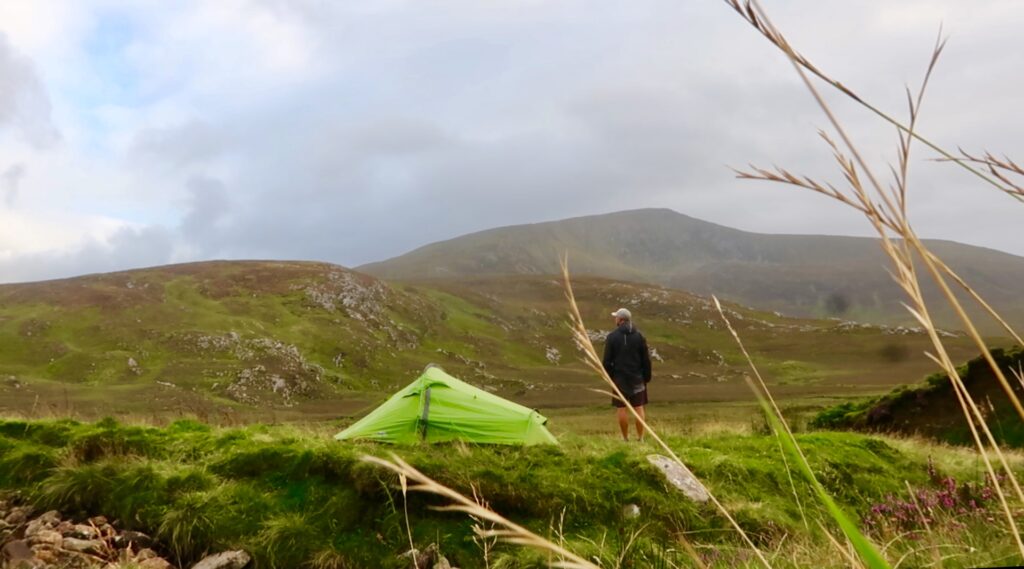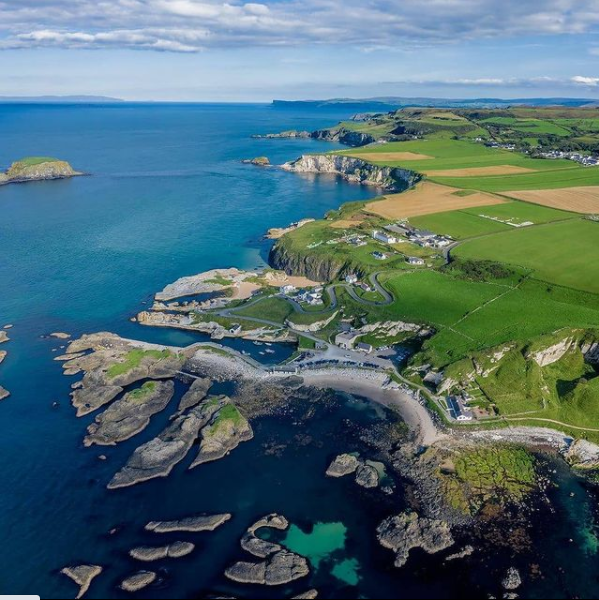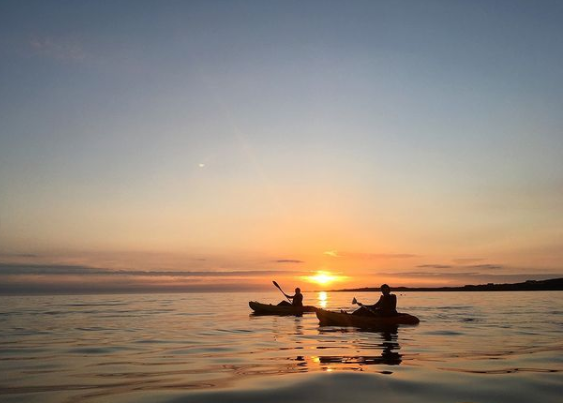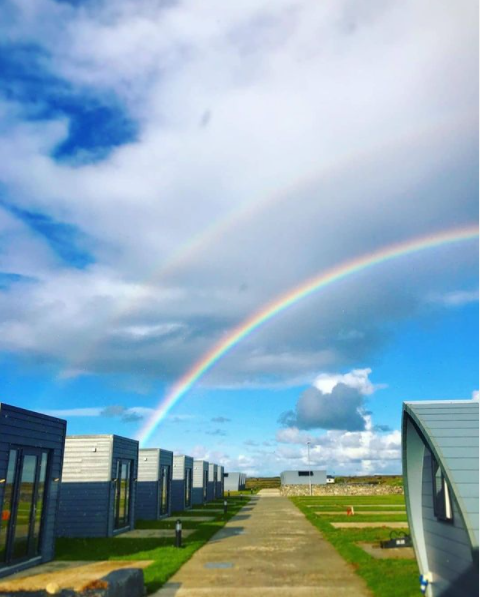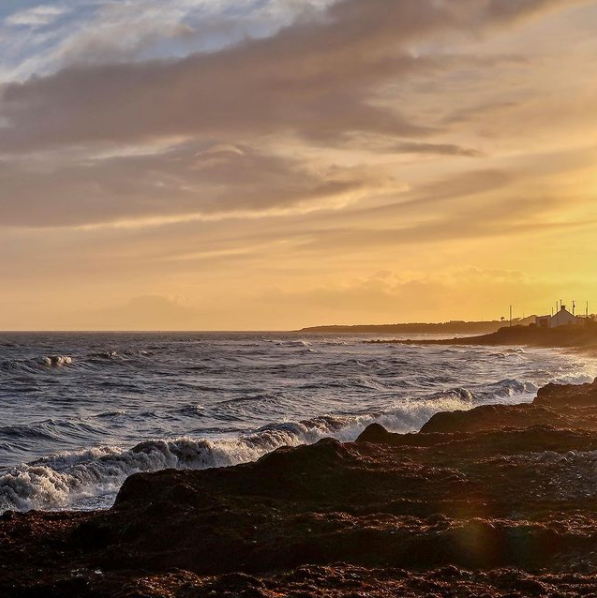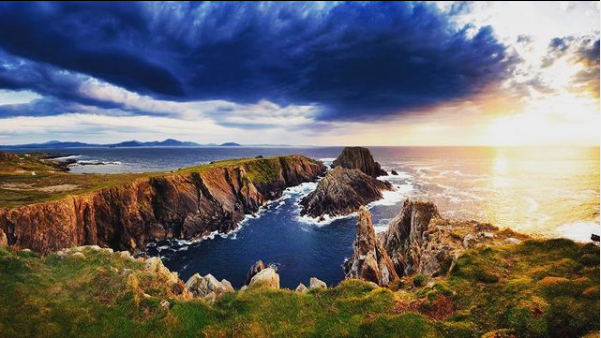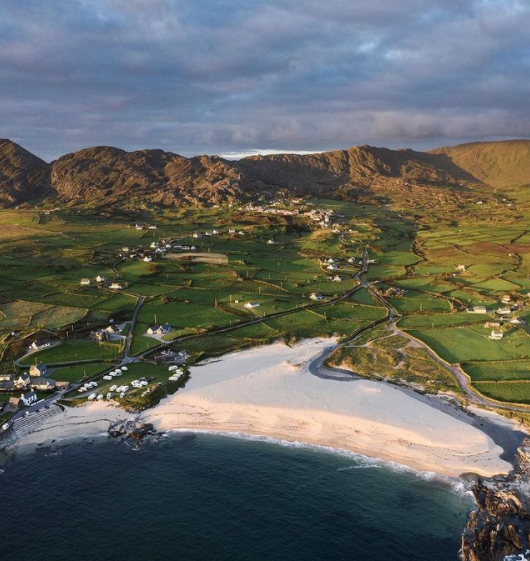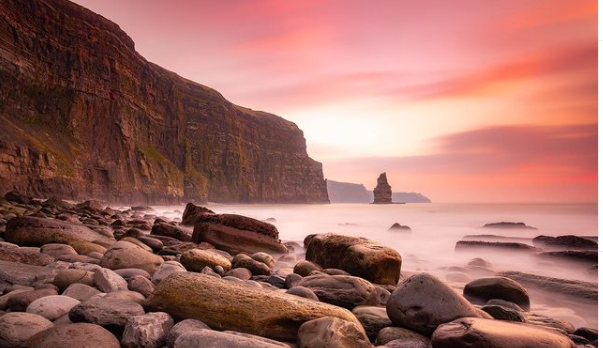The Kerry Way is one of the most popular hiking trails in Ireland that starts and ends in the busy town of Killarney. It traces a loop around the Iveragh Peninsula and features a nice mix of quiet country lanes and rugged trails through the mountains. In fact, the Kerry Way is best known for being home to some of the tallest mountains in Ireland. Its awe-inspiring peaks really do validate its nickname – “The Kingdom”.
For tourists, Kerry itself is a chance to visit idyllic towns in Ireland. But the surrounding countryside is the real jewel in the crown. The Kerry Way is well-marked with a lot of food and water re-supply points along the trail. You will also find great infrastructure for hikers and great campsites and towns to enjoy the occasional rest day.
But that’s just part of the story…
What to Expect in General on the Kerry Way?
Hiking the Kerry Way is by no means easy. This mountainous terrain is a proper physical endurance test for most hikers. It can feel rather remote in places. This is certainly true if the wind and rain shows up as you navigate the higher section of the trail. Some sections of the trail pass through open farmland, while others follow quiet roads. But, there’s little to no traffic in comparison with the main roads around Kerry.
As for water, you can source and filter water quite easily. The towns are fairly reliable for picking up food supplies. Most stages/sections involve 20km+ hiking per day. But the Kerry Way is easy to follow with regular signposts from start to finish.
What’s the Best Time of Year to Hike the Kerry Way
The summer months are always best for hiking the Kerry Way. Expect campsites and accommodation to be busier during the peak months. I don’t like to fear monger but sections of the Kerry Way would be rather dangerous during the winter months and campsites etc will be closed.
At the same time, the weather in Ireland is always unpredictable. You should always pack sufficient warm gear and rain-gear for the Kerry Way such as Helly Hansen Jackets or Trespass Clothing. I personally like to hike these trails in late May or June. There are less people on the Kerry Way and a reasonable chance of some sun!
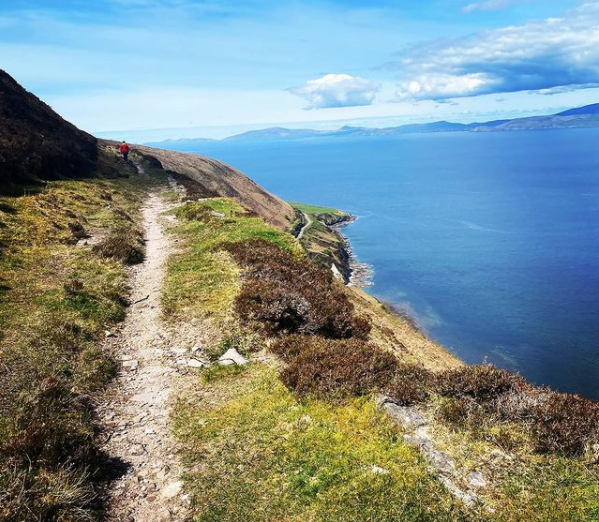
Where to Start and Finish the Kerry Way
The Kerry Way starts and finishes in the same town – Killarney. However, it’s recommended to hike this trail anti-clockwise as it’s easier to follow the signs in this direction. I also think it’s best to start with the section between Glencar and Killarney as it’s good for camping. Either way, it’s really easy to reach Killarney from just about anywhere in Ireland. You literally start walking from the town on day one. If driving, I recommend staying at Flesk Caravan and Campsite as it’s located near the beginning of the trail. They have great facilities and staff that give you advice of where to leave the car while you are hiking.
Wild Camping Versus Guesthouses on the Kerry Way
The Kerry Way is lined with a host of guesthouses and the occasional hotel or hostel. There are also campsites and I was really impressed by the standard on my last outing on the Kerry Way. As for wild camping, it’s quite easy to find secluded spots on many sections. The tricky part is finding a spot that’s not overly exposed. It may be necessary to hike a bit further some days in order to get down from a a mountainside and closer to a lake or sheltered area. The Climbers Inn is a handy spot to camp in the middle of nowhere. It has a small shop and lovely rooms if you’d like a shower and bed for the night.
Food and Water on the Kerry Way
I carry between two and three days food at all times on the Kerry Way. This allows for the option to wild camp each night. Otherwise, it might be necessary to hike on to the next town in order to find more supplies. Either way, you should find the towns are well stocked. It’s only really the valleys (eg. the mountainous section between Glenbeigh and Killarney) in which you might not see a proper shop for more than one day. But make sure to have a water filter in your backpack at the very least!

Day-to-Day Itinerary for Hiking the Kerry Way
Killarney to Black Valley – 22km
Black Valley to Glencar – 23km
Glencar to Glenbeigh – 18km
Glenbeigh to Caherciveen – 28km
Caherciveen to Waterville – 29km
Waterville to Caherdaniel – 13km (Coastal Route)
Caherdaniel to Sneem – 18km
Sneem to Kenmare – 30km
Kenmare to Killarney – 24km
About Hiking Sections of the Kerry Way
Maybe you don’t have time to hike the Kerry Way in full? In that case, it’s still worth hiking a section or two of this amazing trail. I’ve mentioned the section between Killarney and Glenbeigh a few times already. This is because it’s my favourite part of the Kerry Way. After climbing up over Torc Waterfall, the scenery is some of the most spectacular in the country. The same can be said for Black Valley shortly afterward. Either way, it’s always possible to pick out a section or two of the Kerry Way and then take a local bus back to your starting point in Killarney.
Navigation on the Kerry Way
The Kerry Way is remote in places and climbs up around the mountains next to Carrauntoohil. This means you are hiking in the middle of the MacGillycuddy’s Reeks which is the highest mountain range in Ireland. Now, I don’t say that to dissuade anyone from hiking the Kerry Way but rather to highlight the importance of navigation and staying safe on the trail. More specifically, I’m trying to say that it’s crucial to carry the right maps on trail and use a form of GPS as backup. It’s true, the Kerry Way is well-marked but these maps and GPS will not only provide peace-of-mind but also ensure you will not end up in trouble when it comes to navigation. As always, you should do your own due-diligence on the Kerry Way. Make sure to study the maps and day-to-day itinerary before setting off on the hike.
What Gear to Pack for the Kerry Way
It’s important to pack sufficient hiking boots, warm and wet-weather gear and to know the mountains can experience all kinds of weather – even during the summer months. You will need to carry everything on your back, from your tent and sleep system to clothing, food and water. So, make sure to pack your gear with all of this in mind. I highly recommend hiking poles and believe that every hiker should carry and use them on the various climbs. But for more information on what to carry on this trek, check out this packing list for a multi-day hike in Ireland.
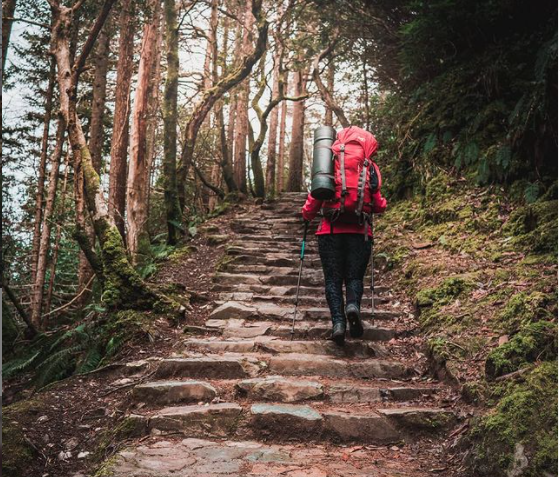
Pros and Cons to Hiking the Kerry Way
Pros
Incredible scenery from start to finish.
Well-marked trail at all times.
Great towns and infrastructure for rest days.
Big wide open spaces on the trail and never feels overcrowded.
Some sections are really suitable for wild camping.
Possible Cons
Busy campsites on occasion and may need to book ahead of time.
May not suit beginners due to remote and mountainous nature of terrain.
Very exposed terrain for some sections and weather can change really quickly.
Final Thoughts
I believe the Kerry Way is one of the top three hiking trails in Ireland. It offers a nice stretch for those who might have ten or more days at hand. However, while most hikers will find a comfortable hiking experience on the Kerry Way, it’s much more than a walk in the hills. You will need to prepare for all weather conditions and be ready to hike up the side of some very remote and exposed mountains. If you don’t have any wild camping experience, I suggest making a day-to-day itinerary with set distances and places to stay. That is, it might be best to reserve beds, rooms or campsites instead of having the added pressure of wild camping for the first time. I also recommend carrying more food, snacks and water than you might need.

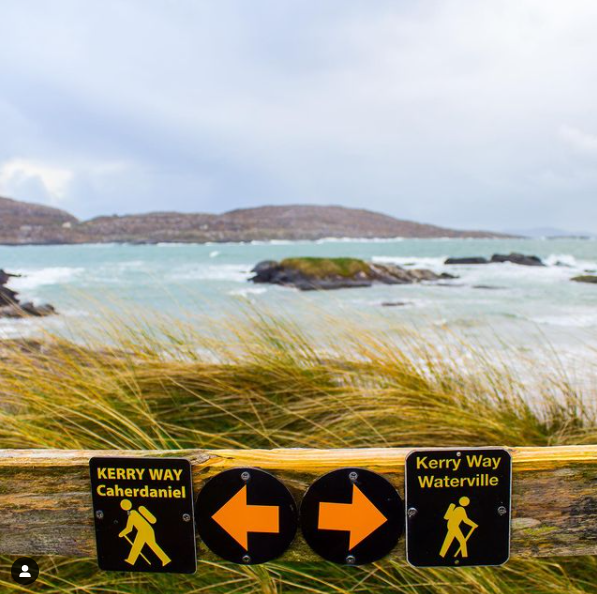
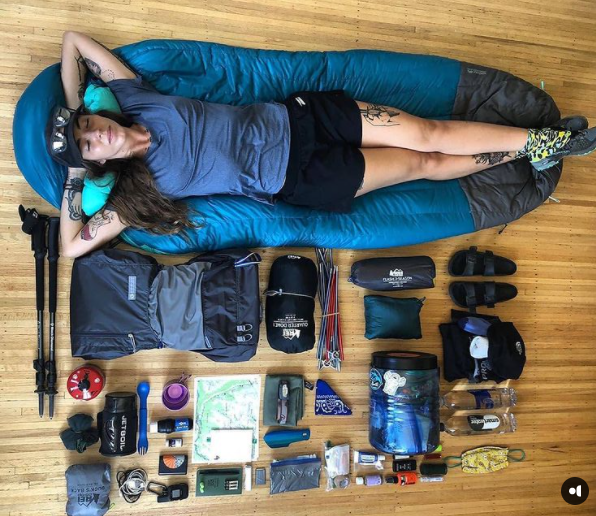

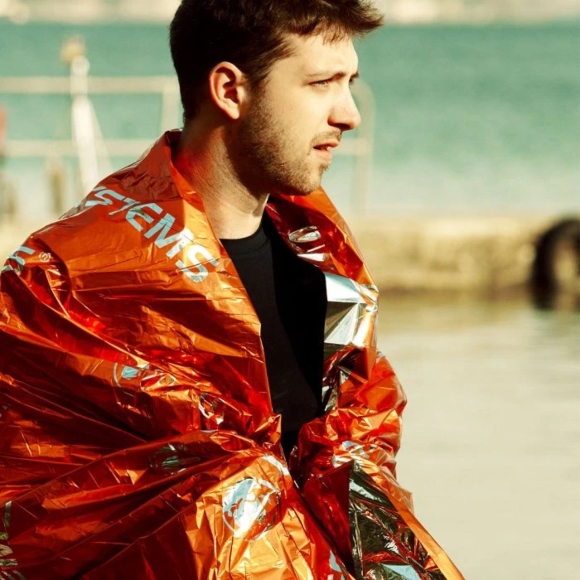




.jpg)







